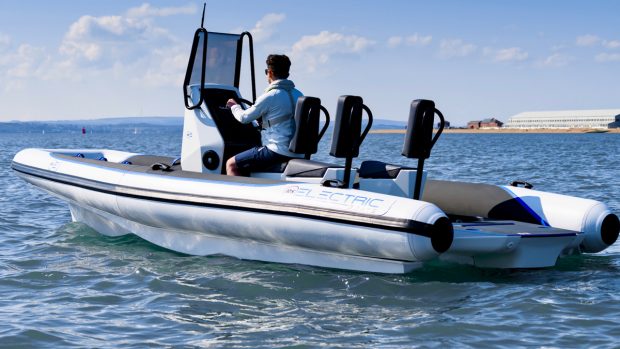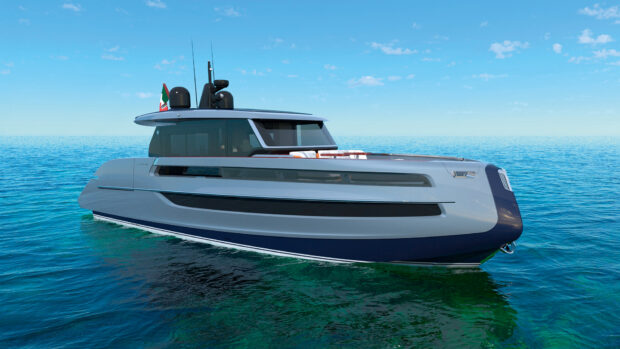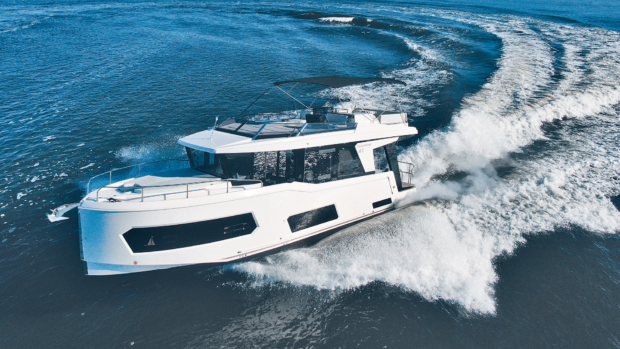The temperature dips as Egret moves further from the equator
Position: 22° 58.75S 41° 45.82W
Course: 254°
Distance travelled: 4288.52 nm from Gibraltar
Average speed: 5.7 knots
Conditions: Seas 12′ swells SW, apparent wind 22.9 knots SW
Scott and Mary Flanders left Gibraltar on 16 September, and we’ll be following their journey every step of the way, thanks to this unique online “blog”. For the first instalment of their diary, click here .
First the weather. Egret is riding gently up and down on large sea swells – 12′ plus – with a little wind chop on top in 12 knots of wind. On the coffee carry-o-meter we are doing well. This is a comfortable change from the 12′ plus powerful waves of the other day.
As Egret drives south into the austral spring and away from the equator the weather is noticeably changing. First the wind swung from the northern quadrants to the southern quadrants. The south flowing Brazil current has given way to the northbound cold Falklands current. Even the birds are different. The frigate birds are gone along with the large shearwaters. Much smaller shearwaters have replaced their larger northern cousins. As we move further south and the fishing becomes better, the bird life will increase proportionately along with the emerging sea lion colonies and penguins.
Egret is slowly pushing her way through this northbound current. Crewman Master Angler Steve mentioned yesterday he noticed how much cooler his forward stateroom was. This is simply the cool seawater temperatures transferring through the hull. The outside air temps are slowly falling as well. By the time this update is sent Egret will be close to rounding Cabo Frio (Cape Cold) now showing its small, volcanic shape through the early morning mist. Cabo Frio is the westbound turning point where Egret enters the 500-mile shallow bay containing, among others, Rio de Janeiro and our destination of Isla Grande 70 miles further west.
Once leaving this upcoming 500-mile shallow bay Egret will cruise southwest down the southern Brazilian coast, past Uruguay and the entrance to the Rio De La Plata, dividing Uruguay and Argentina. Rio De La Plata leads 125 miles up river to Buenos Aires. After crossing the wide river entrance Egret is on to Mar Del Plata, Argentina. As the crow flies this is roughly 1225 miles from Egret’s current position, however it is quite a bit farther in actual traveling distance.
On board we have the large coffee table edition of National Geographic’s Atlas of the World. This is a useful planning tool we use often in overall route planning. We used the atlas for this bit as well as C-Map charts.









